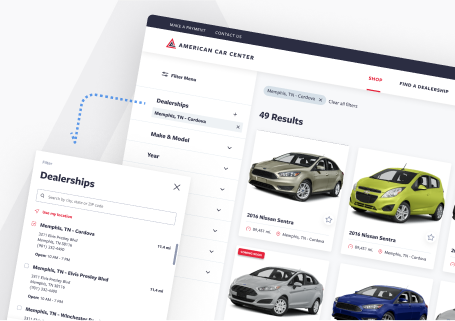Choosing between UX Agency vs. In-House: How to Decide
These days, it’s a truism to say UX design is important. A growing body of evidence validates that the ROI of UX is demonstrable and that industry-leading organizations prioritize the user experience.
Zach Watson

These days, it’s a truism to say UX design is important. A growing body of evidence validates that the ROI of UX is demonstrable and that industry-leading organizations prioritize the user experience.
Related: The ROI of UX: A Living Document
What’s less obvious is how to assemble the necessary talent to employ UX design in your own business and maximize the impact. All roads lead to the eternal question: should you build or should you buy?
In the context of UX design, the question becomes “Should you hire a UX designer or work with a UX agency?”
This is an article about how to decide.
Hiring an In-House Designer
 When IT leaders or product owners consider their user experience, hiring a designer, or even building a full-fledged UX team, is usually the first answer that springs to mind.
When IT leaders or product owners consider their user experience, hiring a designer, or even building a full-fledged UX team, is usually the first answer that springs to mind.
And there’s logic behind that train of thought.
The inherent value of user experience isn’t going away. In nearly every industry, better UX has already become a formidable competitive advantage. Further, increasing data correlates companies investing heavily in design to a higher business valuation.
For a more complete perspective, let’s examine the benefits and drawbacks of hiring.
Benefits
Product and Industry Expertise
When you hire someone in-house, they focus solely on your audience and your application, day in, and day out. If they do their job well, this should lead to an accumulation of knowledge about your application, your industry, and your audience.
Because the best UX designs are derived from understanding and empathy, the more your designer knows about your audience, the better they can design for those end-users.
This is perhaps the biggest benefit of building an in-house team. Years worth of knowledge about your product or audience simply isn’t available for purchase off the shelf.
Long-term Value
As technology advances and more apps flood the market, the standards people have for user experience will only rise. And the importance of UX resources for all technology businesses will grow in direct proportion.
Investing in a UX team equips your organization with the expertise necessary to adjust and optimize your UX and keep pace with the needs of your audience.
Lyft provides us with an excellent example. To provide an ever-improving experience for users — and keep pace with the competition — Lyft has to periodically redesign its UX. The latest version of their app includes a new “one-tap to ride” feature that lets people summon a ride to locations they frequent in one motion.

As Lyft continues to evolve, it’ll rely heavily on its in-house UX team to ascertain how the product should improved based on the ever-changing preferences of users.
Organization-Wide Impact
Although you’ll probably hire UX designers to work on your product or an application, their talents can benefit many other areas of your organization.
Certain UX designers make excellent consults for marketing projects, like landing page and website optimization. Others who excel at research could listen to customer support calls and recommend improvements to your process and support content.
The truth is we are all end-users in some regard. So building an in-house UX shop can benefit your organization in several ways that may not be obvious at first.
Drawbacks
Lack of Consistent Work / Downtime
One of the primary considerations between building an in-house team and looking for an agency has to do with workload. For many companies, UX design needs ebb and flow.
Will you be able to justify the investment in a UX designer — let alone an entire team — 10 months from now when the project that’s on your mind at this moment is complete?
Many organizations simply don’t have the work to keep a UX designer busy.
Over the years, we’ve had numerous designers apply for jobs at DePalma who cited boredom as their main reason for wanting a change of scenery.
UX Expertise is Costly and Skills Vary
The title “UX designer” is quite a broad term that encompasses a range of skills. A UX professional may specialize in
- User research
- Information architecture, workflow mapping and wireframing
- Developing prototypes and interaction design
- Visual design
- Content Strategy
Few UX designers can perform all of these responsibilities, and honestly, you don’t want someone to. Hiring one person to fulfill all these tasks is akin to expecting an ear, nose, and throat doctor to perform open-heart surgery. The results are almost always subpar.
But you’re hiring a team, right? Easier said than done. User experience talent is in high demand, and the salary expectations reflect the market.
According to Glassdoor, a UX designer working at a company with 0-50 (really, zero employees?) commands an average salary of $85,277.

Payscale provides a slightly more conservative salary requirement at $74,183.

Importantly, these salary expectations are for junior to mid-level designers. A high-performing UX team will feature more senior members in leadership roles who will expect much higher compensation.
What's more, hiring a designer means you'll need to divert recruiting resources to find the right person and management resources to guide them once they're on board.
And no matter how great your organization's culture is, you'll have to deal with turnover.
The Verdict
Here’s the truth: hiring an in-house UX designer is a complicated, time-consuming undertaking. Plus, it’s expensive. But if you have the resources to hire the right people and the initiative to build a long-term strategy, then hiring an in-house designer could be the right choice for you.
Hiring a UX Agency
![]() If starting a UX team from the ground up sounds too daunting, or if you don’t think a solitary designer can get the job done, then partnering with a UX firm could be the way to go.
If starting a UX team from the ground up sounds too daunting, or if you don’t think a solitary designer can get the job done, then partnering with a UX firm could be the way to go.
As you would when considering in-house candidates, each agency needs to be thoroughly vetted. But under the right circumstances, UX agencies are outstanding sources of design talent and strategic experience.
Benefits
Better Cost Control
Working with an agency provides a kind of cost control that you simply don’t get when you hire someone in-house. After a statement of work (SOW) is signed, agencies more or less must adhere to the scope of work outlined in the contract.
This narrow type of agreement grants you greater domain over when work starts and stops as well as how much budget you commit to the project.
At DePalma, we take an incremental approach to UX design, so we complete one segment of the work and get feedback before we move on.
By dividing the work into parts rather than estimating for the entire project, we’re able to perfect our bids and give the client even greater control over their budget.
Though it varies from project to project, hiring an agency to complete your project is often less expensive overall than hiring even one senior UX designer in-house. We've designed entire applications for less than half of the salary number we referenced above.
Greater Collective Expertise
In many ways, agencies are natural habitats for accomplished designers. Working on multiple projects with markedly different requirements is the main draw because it keeps talented designers engaged.
Best-in-class agencies will employ entire teams of UX practitioners who have the respective skills needed to fulfill the entire design process. And when I say design process, I mean whatever version of human-centered design an agency uses.
A fully-equipped agency team will include the following:
- UX researcher
- UX designer
- Visual designer
- Content strategist
- Creative director
- Project manager
Now think about it.
When you hire an agency, not only will you work with more experienced professionals, but you’ll also work with a complete team. Plus, you’ll get strategic guidance from senior practitioners and leaders that less experienced designers can’t provide.
Related: How to Choose the Right UI / UX Design Firm
Increased Time to Value
Because agency design teams must deliver under tight deadlines, they usually operate with strict, time-tested processes. Where an in-house hire make takes a week or two just to get onboarded, good agencies can ramp up and start delivering within two to three weeks.
Agencies can often just do the work faster. For example, our UX team at DePalma has been able to completely redesign relatively complex SaaS applications in under three months, whereas it would typically take an in-house team twice as long at least.
The bottom line is that agencies can more quickly get your project to a place where your investment starts to return value.
Drawbacks
Bullsh*t.
Let me level with you. I’ve worked at and worked with, numerous agencies in my career.
And while I’ve been lucky to work at shops that employed people who could do what they said they could do, there are plenty of agencies where that isn’t true.
Particularly in the software development and UX design domains, several agencies are willing to commit to work they aren’t equipped to perform — at least not with any degree of competence.
To avoid being duped by charlatans, look for these characteristics when you’re vetting UX design firms:
- A research-driven process
- A team of UX specialists, not just graphic designers
- A portfolio of UX design work
- An experienced user experience practitioner
Oh, and always look for third-party reviews on websites like Clutch.co. They perform independent interviews directly with the client and post them on their platform. You can see one of our recent Clutch.co reviews here: DePalma Studios Earns a New Review on Clutch.
The Verdict
Partnering with an agency can get you access to experienced UX designers who will complete your project with speed and expertise. If you adhere to each SOW you sign, the costs of working with an agency can also be much lower.
Of course, there are always drawbacks. Hiring external talent won’t build internal resources for your organization. And there’s always the danger of false promises and over-commitment.

UX best-practices consultation!
Review your product with our industry leaders today at no cost.
Table of Contents

UX best-practices consultation!
Review your product with our industry leaders today at no cost.





